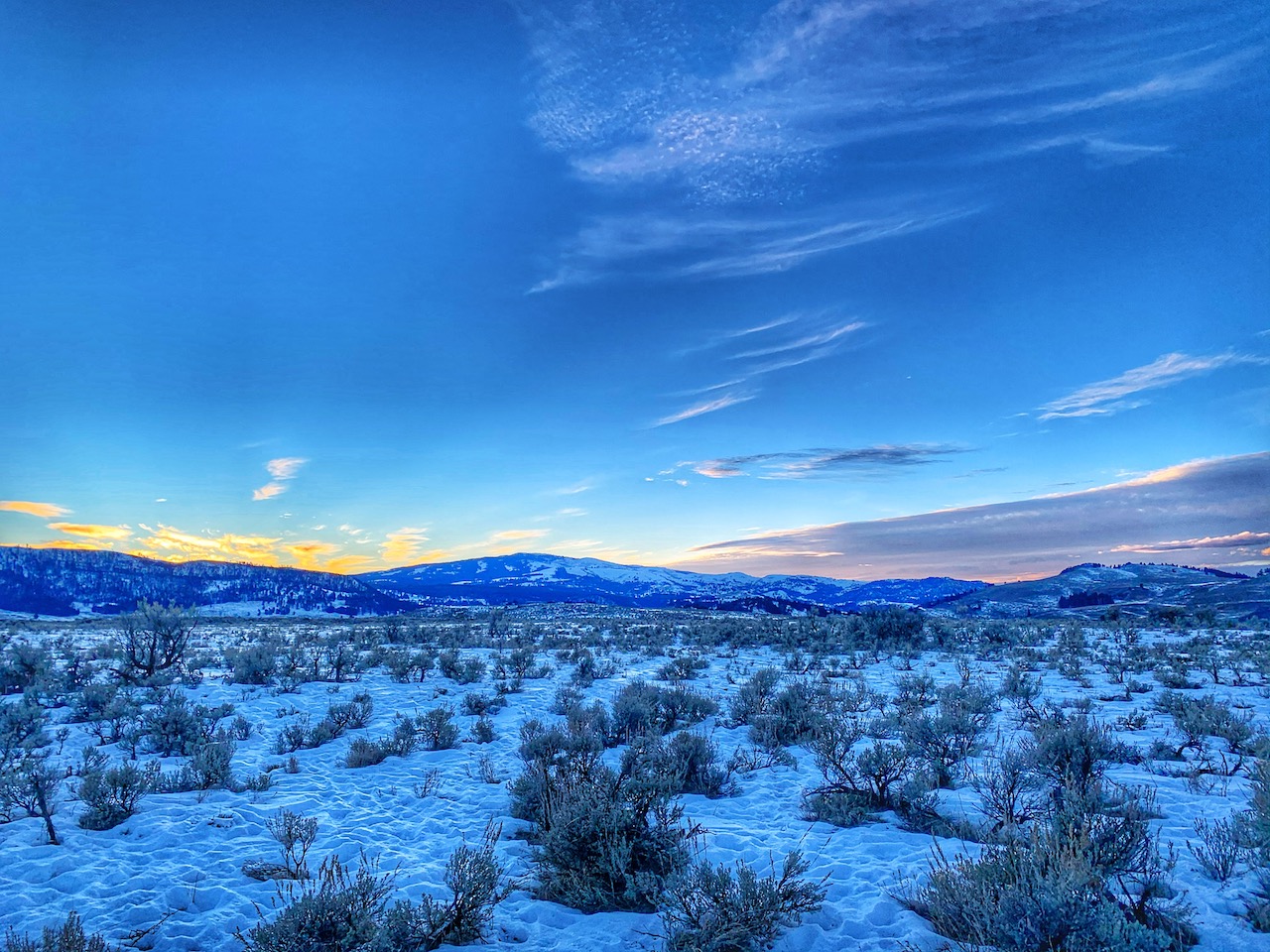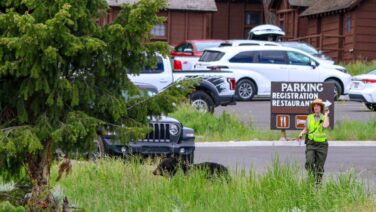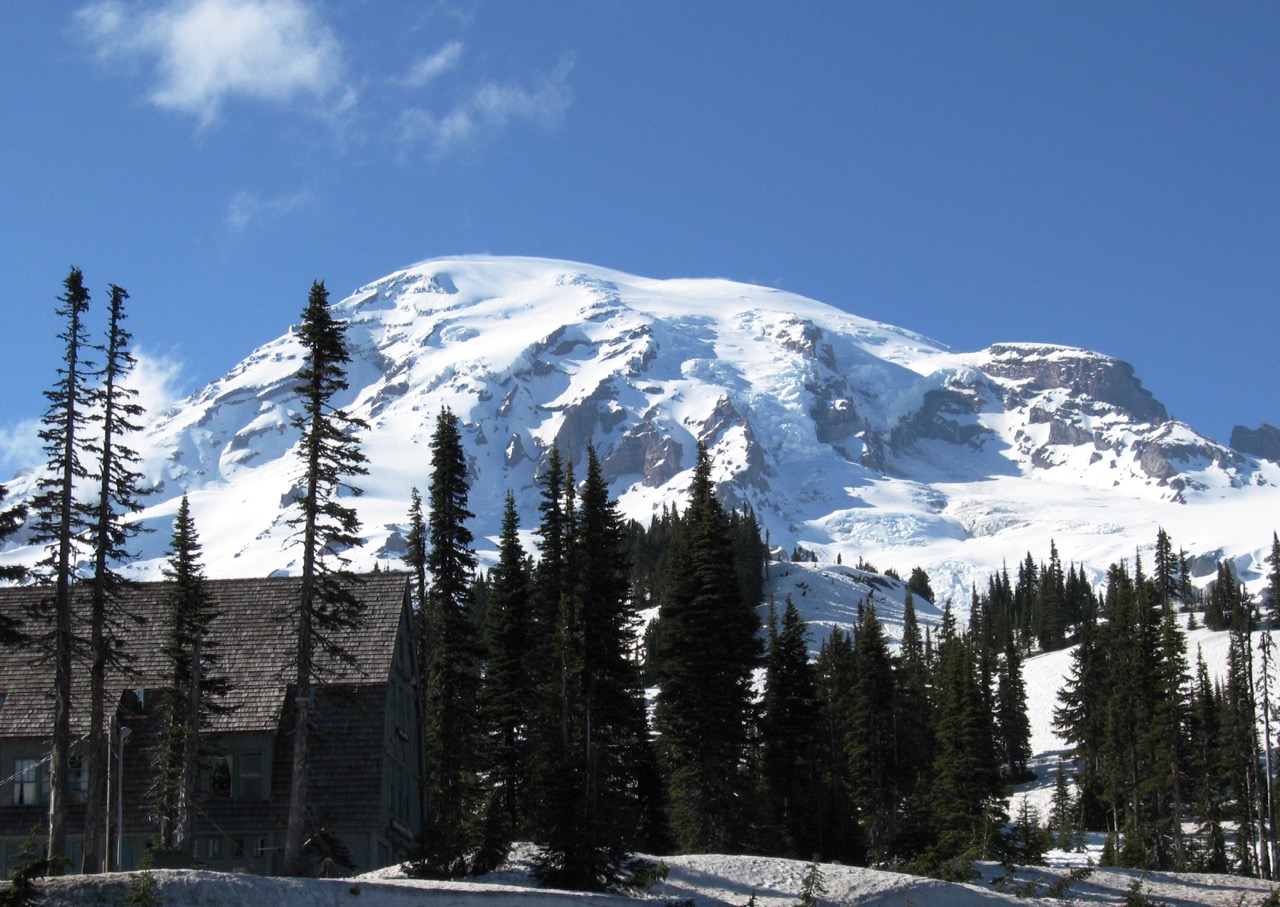Location: North East Entrance Road
Distance: 5 miles round trip
Elevation Gain: ~250 feet
Gear Typically Needed in Winter: Trekking poles, Traction Devices, Snowshoes, or Cross Country Skis
The Slough Creek Road in the winter is easily in the top three easy winter trail adventures you can have in the northern range of Yellowstone National Park. Offering sweeping views of the region’s landscape, potential for incredible wildlife-watching, and an opportunity to experience the elements first-hand, you shouldn’t skip this.
Located just before passing through the narrow canyon along the Lamar River, Slough Creek is currently one of the best spots in Yellowstone to spot wolves. Over the last few years, one of the wolf packs in Yellowstone has been denning in the region during the spring months, dazzling wildlife watchers. In the winter, wolves, bison, coyotes, foxes, elk, and even an occasional moose can be spotted in the area. No matter what the month, Slough Creek is worth a stop and an adventure.
During the winter months, the dirt road leading to Slough Creek Campground is closed to vehicles, turning this wide path into an ideal place to wander in the cold temperatures and wind-swept snow. Please park in the appropriate spots around the pit toilets. Do not park in the spots in front of the toilets or block the gate if you plan to hike. There are pullouts nearby along the road that should be used. Once parked, make your way to the gate and walk around it.
The path is usually easy to follow, meandering down toward Slough Creek and alongside the flank of Bison Peak. You’ll more than likely see some other human tracks, be it from snowshoes or cross-country skis. NEVER walk on the cross-country ski path. There is plenty of room.
The trail will roll in elevation bit, but for all intents and purposes, there is really only one hill to descend on the trek out and up on the way back. The hill is located less than a half-mile from the parking area. Once the hill has been descended, the path will head toward Slough Creek. Along the way, stop and scan for animals. Nearly every winter trek along the Slough Creek Road I have seen bison and coyotes.
Just under one mile from the gate and pit toilets, you’ll have a chance to leave the road at a pullout and walk out to a fantastic view of Slough Creek. This area is often popular with eagles and it is also a spot where I have watched wolves on the hills to the north. This is a great place to stand and scan for a while, or it is also a decent spot to turn back. If you choose to do so, do not fret- you’ll have completed a nearly two-mile winter trek in Yellowstone!
If you do want to keep going, I highly recommend it. From here, animal tracks in the snow start to increase, allowing you to see where coyotes have been hunting, where wolves have been roving, and where bison roam. You’ll also have a higher chance of encountering bison along the path between here and the campground. If you do encounter a bison, do not approach them. You’ll have to get off the trail and walk around them. If they walk toward you, do not stay where you are, more away from their path.
Beyond the pullout where you’ll have an option to turn around, the next mile of the trail is quite pretty. Occasional creek views will emerge on your left, while the right side will show off the rocky and rugged side of Bison Peak. Keep an eye out for animals of all sizes, as wildlife is often quite active here.
At just under two miles, the path takes a left at the Slough Creek Trailhead. Super serious adventurers with proper gear, hoping for a long day with more elevation gain and winter conditions should consider hiking the first bit of this trail to the meadow. Everyone else should walk the road to the outbuilding and the second gate. At the gate, walk around it, and continue to the campground. This section of the path will narrow and animal prints in the snow should increase. Once at the campground, walk up the creek a little bit and take in the grandeur and isolation of being here. Less than one-half of one percent of winter visitors will experience this moment.
After you’ve had your fill of the view near the campground, you have two options. You can either return the way you came or walk through the campground and then walk through the woods back to the trail. The second option should only be attempted by those with experience in route finding, as you’ll need to eventually find your way back to the road. It isn’t the most difficult task, especially since you’ll mainly just stick as close to the creek as possible until you see the large building by the second gate.
Once you are back on the road, walk back toward the parking area, carefully scanning for animals at every opportunity. If you are doing this trek in the early morning or late afternoon, stop every so often and listen, as you may hear coyotes or even wolves howling in the distance.
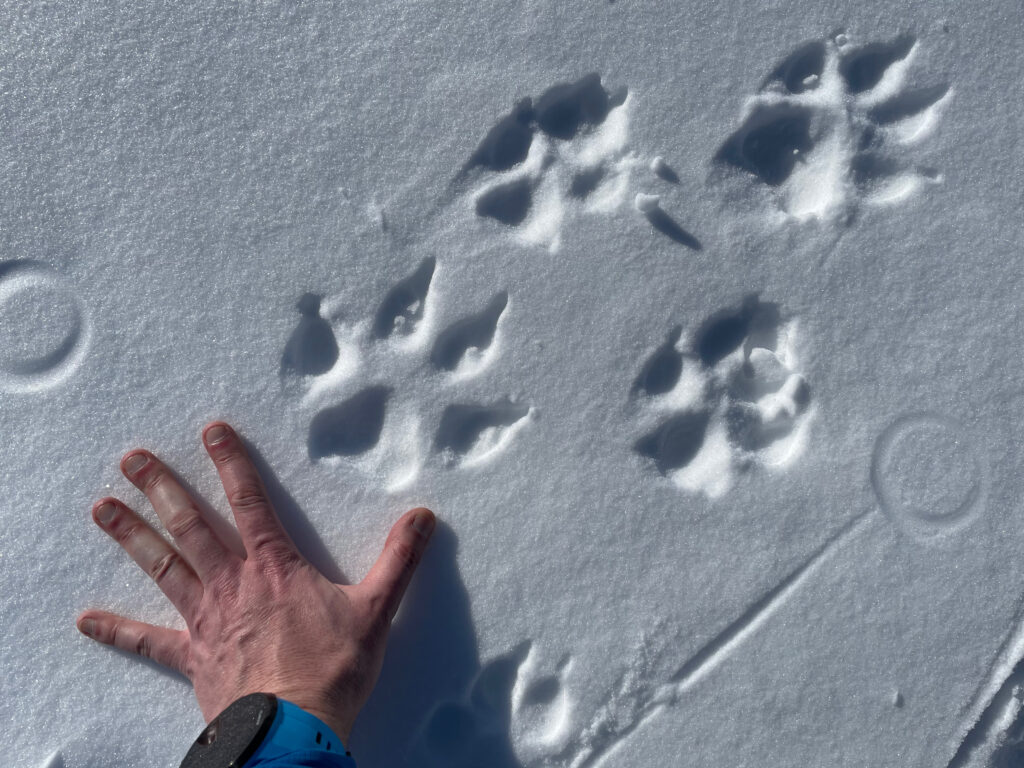
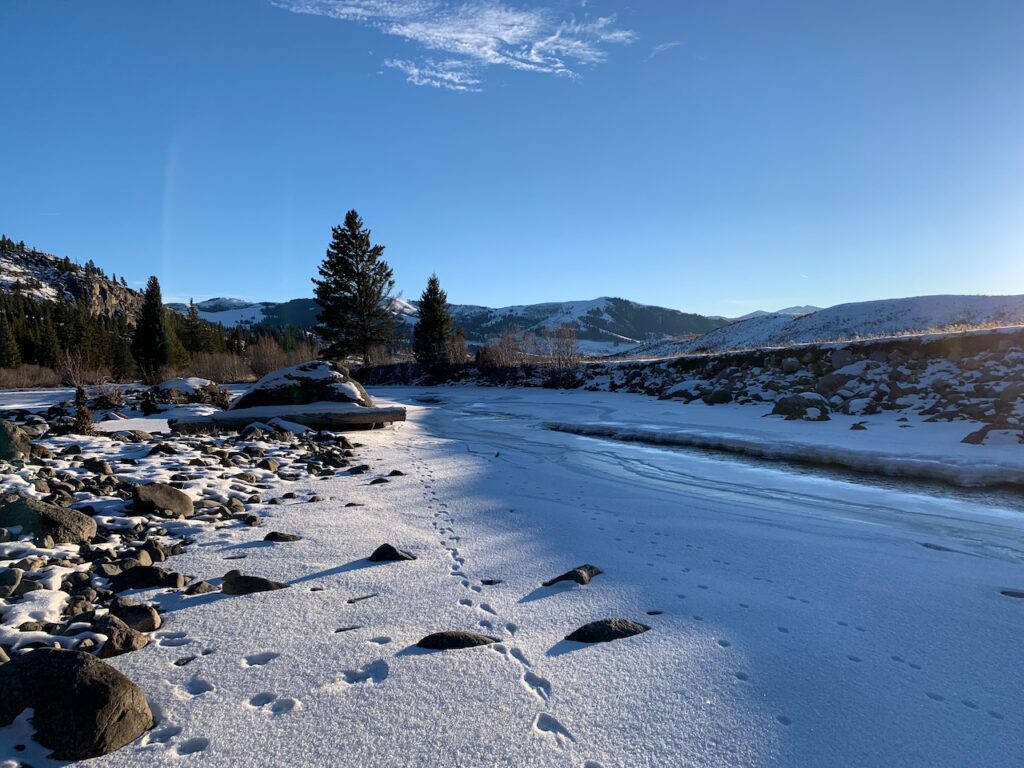
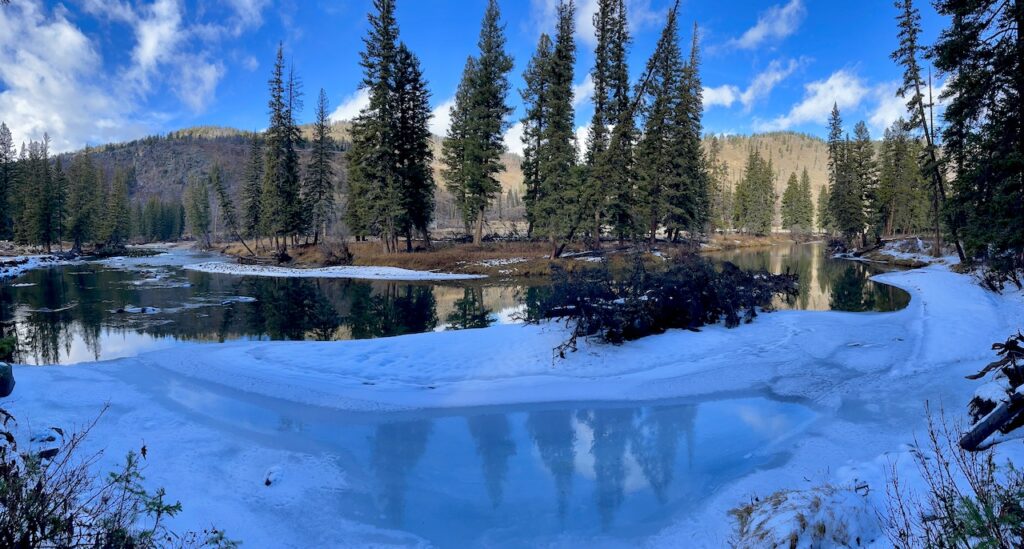
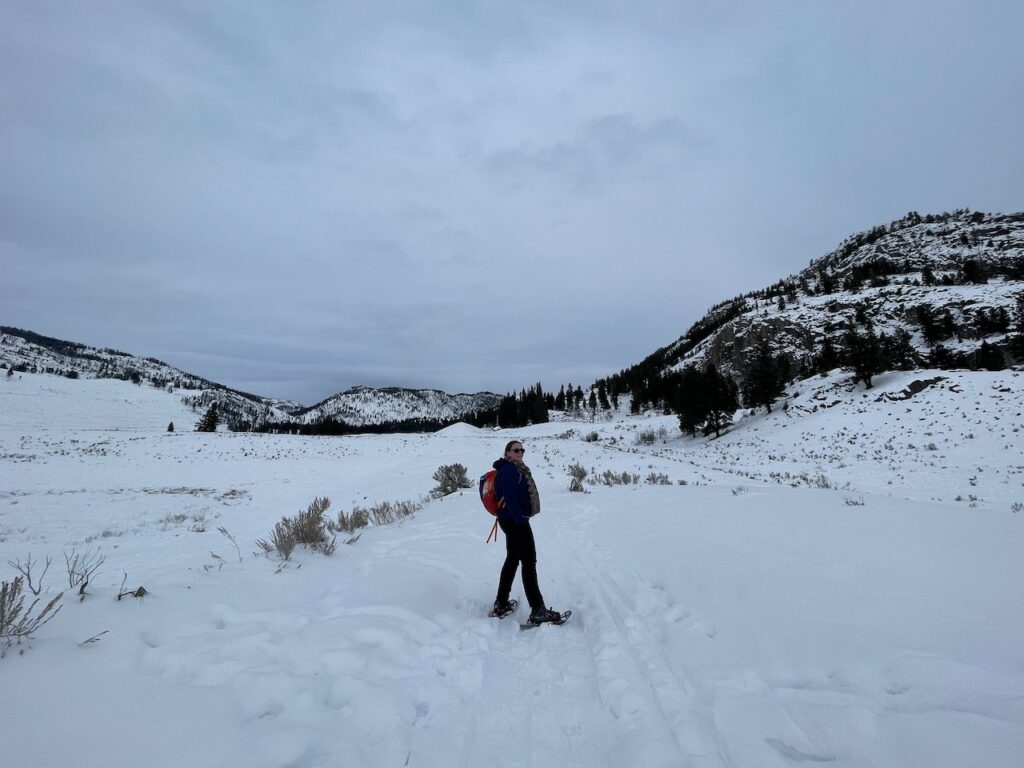
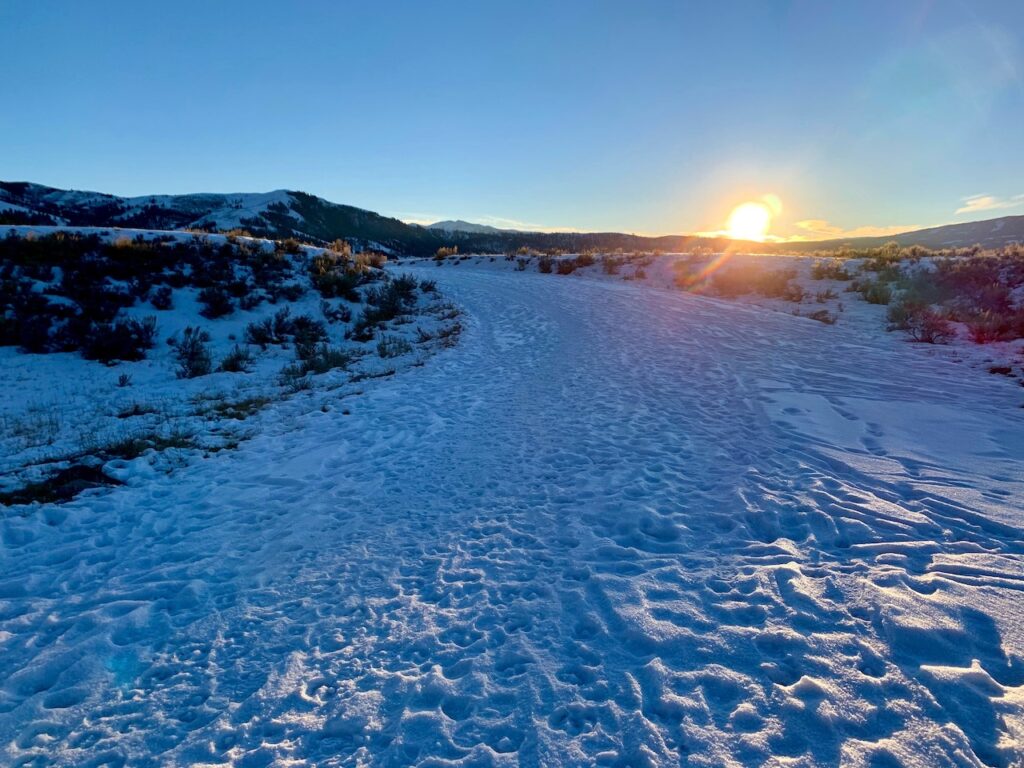
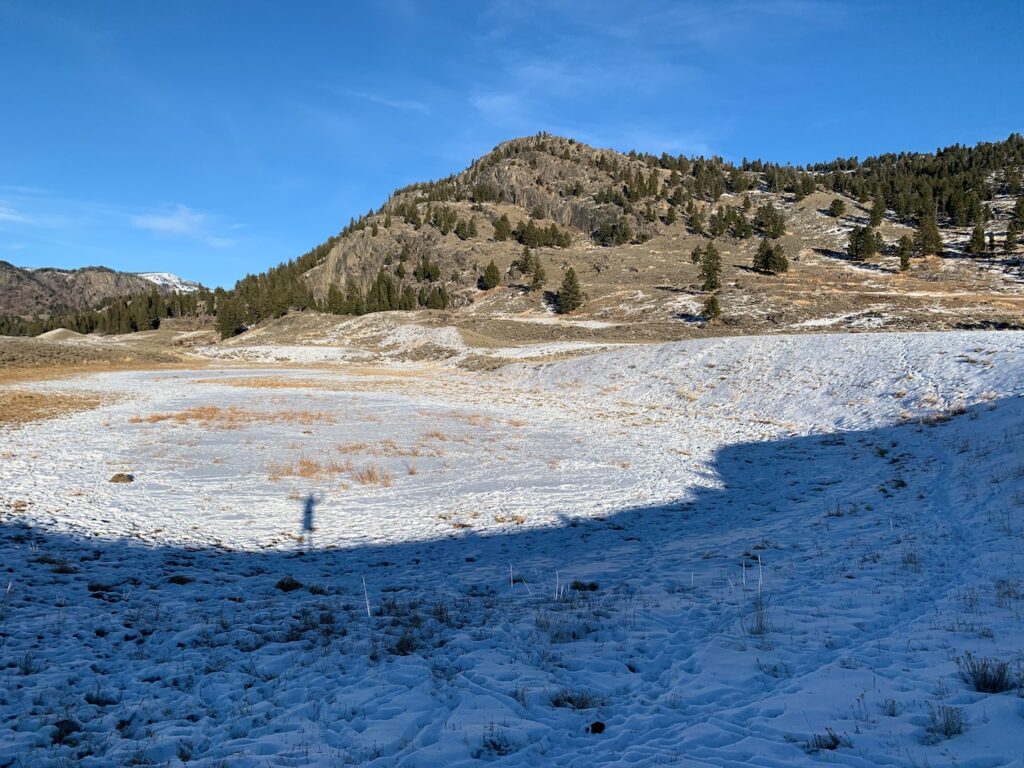
NOTE: This post was written in January of 2024. If you’d like current conditions for this trail, please shoot me a text or email and I’ll respond as soon as I can. If you’d like other trail suggestions, you can go here to our archives or pick up a copy of one of my “Hiking in Yellowstone” guidebooks. A new guidebook with easy hikes all around the park will be available in 2024.
If you’d like to experience this trail with an expert guide, so you can see all the best spots, learn about the history of the region, and more, this is one of my winter hiking tours. I also provide snowshoes, if needed.

